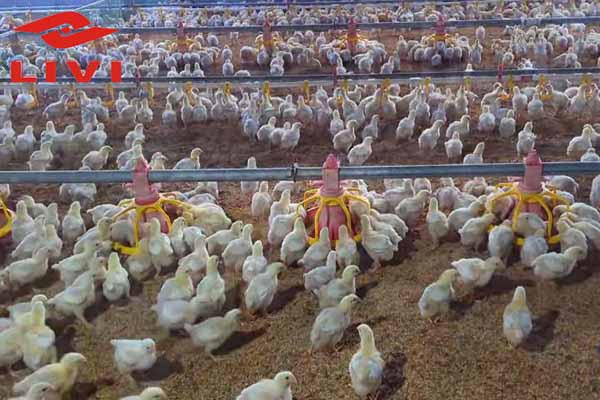China Broiler Eco-Cage System: A Comprehensive Overview
Time : 2025-06-29
The China broiler eco-cage system represents a significant advancement in poultry farming technology. This article delves into the intricacies of the eco-cage system, exploring its design, benefits, and its impact on the broiler industry in China. By utilizing professional knowledge in poultry equipment, this article aims to provide a comprehensive overview of the eco-cage system, ensuring it is both informative and SEO-optimized.
—
The broiler industry in China has experienced remarkable growth over the past few decades, with the country emerging as a global leader in poultry production. However, with this growth comes the need for more sustainable and efficient farming practices. The China broiler eco-cage system is one such innovation that is reshaping the poultry industry.
Design and Features of the Eco-Cage System
The eco-cage system is a specialized housing design tailored for broiler chickens. These cages are constructed to promote a healthy and comfortable environment for the birds, while also being environmentally friendly and economically viable.
1. Material and Construction
The eco-cages are typically made from high-quality, durable materials that can withstand harsh conditions and are resistant to corrosion. They are designed to be easily sanitized, which is crucial in preventing the spread of diseases among the broiler population.
2. Space Utilization
Each eco-cage is carefully designed to maximize space utilization while ensuring that each bird has enough room to move and grow. The layout of the cage often includes multiple tiers or levels, allowing for efficient stacking and high-density farming.
3. Ventilation and Temperature Control
One of the key features of the eco-cage system is its advanced ventilation system. These cages are equipped with automated fans and air filters to maintain a constant and optimal temperature and humidity level. This ensures that the birds are comfortable throughout the growing cycle.
4. Feeding and Watering Systems
The eco-cage system includes automated feeding and watering systems that reduce labor costs and ensure each bird receives the necessary nutrients and hydration. These systems are designed to minimize waste and optimize feed conversion ratios.
5. Waste Management
Eco-cages are designed with waste management in mind. The system incorporates mechanisms for collecting and disposing of waste, reducing the risk of disease and minimizing environmental impact.
Benefits of the Eco-Cage System
The adoption of the eco-cage system in China has led to several significant benefits for the broiler industry:
1. Improved Bird Health and Welfare
The controlled environment of the eco-cage system helps reduce the incidence of diseases common in crowded poultry houses. The ability to manage temperature, humidity, and ventilation ensures that birds are less stressed, leading to better growth rates and meat quality.
2. Increased Production Efficiency
The automated systems within the eco-cage system streamline farming operations, leading to increased efficiency. This includes more accurate feeding, improved water management, and easier flock monitoring, all of which contribute to higher productivity.
3. Cost Savings
Although the initial investment in eco-cages can be substantial, the long-term cost savings are substantial. Reduced labor costs, lower disease incidence, and improved feed conversion ratios all contribute to a more cost-effective farming operation.
4. Environmental Responsibility
The eco-cage system is designed to minimize the environmental impact of broiler farming. By reducing waste and optimizing resource use, the system aligns with the growing demand for sustainable agriculture practices.
Implementation and Challenges
The implementation of the eco-cage system in China has not been without its challenges. Here are some of the key considerations:
1. Initial Investment
The cost of installing eco-cages can be a barrier for smaller-scale farmers. However, as the technology becomes more mainstream, the costs are expected to decrease.
2. Training and Adaptation
Farmers and workers need to be trained on how to operate and maintain the eco-cage system effectively. This may require additional resources and time.
3. Regulatory Compliance
Adhering to local and national regulations regarding animal welfare and environmental standards is essential. This may require adjustments to the system to meet specific regulatory requirements.
Conclusion
The China broiler eco-cage system is a testament to the continuous innovation in poultry farming technology. By focusing on sustainability, efficiency, and animal welfare, this system is set to play a pivotal role in shaping the future of the broiler industry in China and beyond.
—












